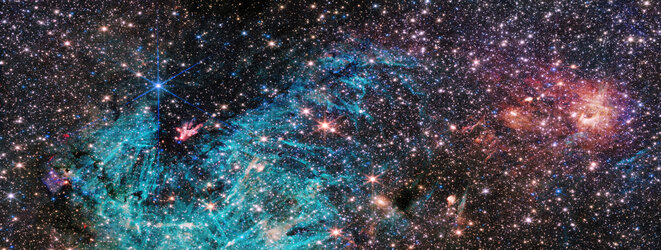Accept all cookies Accept only essential cookies See our Cookie Notice

About ESA
The European Space Agency (ESA) is Europe’s gateway to space. Its mission is to shape the development of Europe’s space capability and ensure that investment in space continues to deliver benefits to the citizens of Europe and the world.
Highlights
ESA - United space in Europe
This is ESA ESA facts Member States & Cooperating States Funding Director General Top management For Member State Delegations European vision European Space Policy ESA & EU Space Councils Responsibility & Sustainability Annual Report Calendar of meetings Corporate newsEstablishments & sites
ESA Headquarters ESA ESTEC ESA ESOC ESA ESRIN ESA EAC ESA ESAC Europe's Spaceport ESA ESEC ESA ECSAT Brussels Office Washington OfficeWorking with ESA
Business with ESA ESA Commercialisation Gateway Law at ESA Careers Cyber resilience at ESA IT at ESA Newsroom Partnerships Merchandising Licence Education Open Space Innovation Platform Integrity and Reporting Administrative Tribunal Health and SafetyMore about ESA
History ESA Historical Archives Exhibitions Publications Art & Culture ESA Merchandise Kids Diversity ESA Brand Centre ESA ChampionsLatest
Space in Member States
Find out more about space activities in our 23 Member States, and understand how ESA works together with their national agencies, institutions and organisations.
Science & Exploration
Exploring our Solar System and unlocking the secrets of the Universe
Go to topicAstronauts
Missions
Juice Euclid Webb Solar Orbiter BepiColombo Gaia ExoMars Cheops Exoplanet missions More missionsActivities
International Space Station Orion service module Gateway Concordia Caves & Pangaea BenefitsLatest
Space Safety
Protecting life and infrastructure on Earth and in orbit
Go to topicAsteroids
Asteroids and Planetary Defence Asteroid danger explained Flyeye telescope: asteroid detection Hera mission: asteroid deflection Near-Earth Object Coordination CentreSpace junk
About space debris Space debris by the numbers Space Environment Report In space refuelling, refurbishing and removingSafety from space
Clean Space ecodesign Zero Debris Technologies Space for Earth Supporting Sustainable DevelopmentApplications
Using space to benefit citizens and meet future challenges on Earth
Go to topicObserving the Earth
Observing the Earth Future EO Copernicus Meteorology Space for our climate Satellite missionsCommercialisation
ESA Commercialisation Gateway Open Space Innovation Platform Business Incubation ESA Space SolutionsEnabling & Support
Making space accessible and developing the technologies for the future
Go to topicBuilding missions
Space Engineering and Technology Test centre Laboratories Concurrent Design Facility Preparing for the future Shaping the Future Discovery and Preparation Advanced Concepts TeamSpace transportation
Space Transportation Ariane Vega Space Rider Future space transportation Boost! Europe's Spaceport Launches from Europe's Spaceport from 2012Latest

Milky Way Center (MeerKAT and Webb)
Thank you for liking
You have already liked this page, you can only like it once!
Follow-up research on a 2023 image of the Sagittarius C stellar nursery in the heart of our Milky Way galaxy, captured by the NASA/ESA/CSA James Webb Space Telescope, has revealed ejections from still-forming protostars and insights into the impact of strong magnetic fields on interstellar gas and the life cycle of stars.
This image of the Milky Way captured by the MeerKAT radio telescope array puts Webb’s image of the Sagittarius C region in context. The MeerKAT image spans 1,000 light-years, while the Webb image covers 44 light-years.
At the center of the MeerKAT image the region surrounding the Milky Way’s supermassive black hole blazes bright. Huge vertical filamentary structures echo those captured on a smaller scale by Webb in Sagittarius C’s blue-green hydrogen cloud. Like a super-long exposure photograph, MeerKAT shows the bubble-like remnants of supernovas that exploded over millennia, capturing the dynamic nature of the Milky Way’s chaotic core.
Astronomers think the strong magnetic fields in the heart of the galaxy are shaping the filaments seen by MeerKAT and Webb, and may also play a role in suppressing star formation in the region. Though there is a rich cloud of raw star-making material in Sagittarius C, star formation rates are not as high as astronomers expect. Instead, magnetic fields may be strong enough to resist the gravity that would typically cause dense clouds of gas and dust to collapse and forge stars.
[Image description: Processed data collected by the MeerKAT radio telescope shows the plane of the Milky Way galaxy, with a graphic pullout highlighting a much smaller region on the right, captured by the James Webb Space Telescope’s near-infrared light observations. The MeerKAT image is colored in blue, cyan, and yellow, with a very bright white-yellow center that indicates the location of the Milky Way’s supermassive black hole. Painterly bubbles of various sizes, clouds, and vertical brushstroke-like streaks make up the radio image. The Webb inset shows stars and gas clouds in red, with an arching cloud of bright cyan that contains many straight, needle-like features that appear more crystalline than cloudy.]
-
CREDIT
NASA, ESA, CSA, STScI, SARAO, S. Crowe (UVA), J. Bally (CU), R. Fedriani (IAA-CSIC), I. Heywood (Oxford) -
LICENCE
CC BY 4.0 INT or ESA Standard Licence
(content can be used under either licence)

Sagittarius C (NIRCam Image)

Webb in full focus

MIRI and Spitzer comparison image

MIRI’s sharper view hints at new possibilities for science















 Germany
Germany
 Austria
Austria
 Belgium
Belgium
 Denmark
Denmark
 Spain
Spain
 Estonia
Estonia
 Finland
Finland
 France
France
 Greece
Greece
 Hungary
Hungary
 Ireland
Ireland
 Italy
Italy
 Luxembourg
Luxembourg
 Norway
Norway
 The Netherlands
The Netherlands
 Poland
Poland
 Portugal
Portugal
 Czechia
Czechia
 Romania
Romania
 United Kingdom
United Kingdom
 Slovenia
Slovenia
 Sweden
Sweden
 Switzerland
Switzerland

























